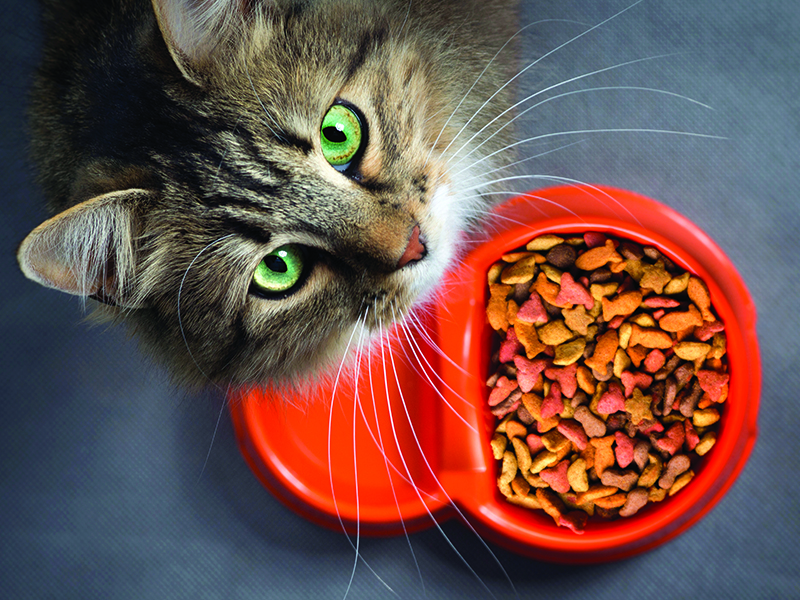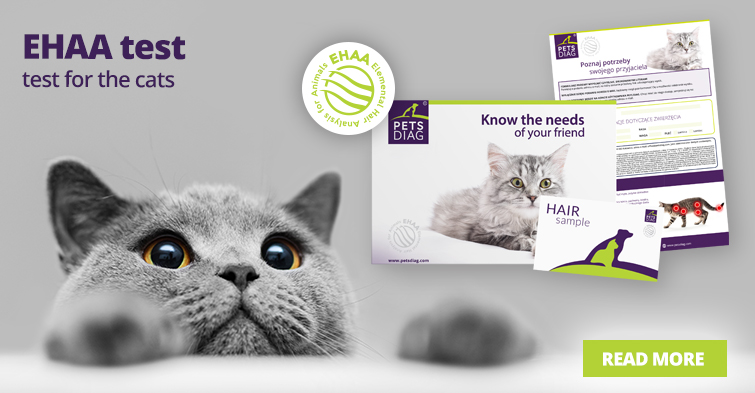A proper diet is essential for a cat’s health, which is reflected in the appearance of its coat. The coat is made up of keratin, amino acids, water, and minerals. If a cat’s coat is properly saturated with these components, it will be shiny, smooth, and soft, indicating the overall health of the animal. Therefore, to monitor a cat’s health, it is also important to monitor its coat. How can elemental hair analysis help us in this regard?
Diet and a cat’s coat health
A suitable diet is crucial to a cat’s coat health and condition, providing it with essential nutrients and helping to fight diseases that can affect coat appearance. The diet should contain an appropriate amount of high-quality protein from meat or fish, fat, carbohydrates, vitamins, and minerals, as well as water. Protein is essential for producing keratin, amino acids, and other hair components, while fat prevents brittleness, provides shine and softness to the coat, and carbohydrates provide energy. Vitamins and minerals such as vitamin A, B vitamins, vitamin C, vitamin E, zinc, and copper are essential for a cat’s coat health and condition, as well as for strengthening the immune system.
Too little protein in a cat’s diet can lead to weakened hair and baldness, while too little fat can cause dullness. On the other hand, a lack of vitamins and minerals can lead to a variety of coat-related problems, such as flaky skin, seborrhoea, dull coat, excessive hair loss, and a tendency to develop spots and baldness. It is also important to provide the cat with the appropriate amount of water, as dehydration can cause the coat to become dry and dull.
Element hair analysis for cats
Element hair analysis for cats shows nutritional deficiencies in their bodies and can help identify health problems that may affect the condition of their coat. The analysis is a test that allows for the determination of whether a cat’s diet provides it with the necessary nutrients and whether its body is properly absorbing them. The test involves analysing the mineral content of the coat, such as zinc, copper, iron, magnesium, as well as calcium, silicon, sulfur, and phosphorus, i.e., those macro and microelements that have the greatest impact on the appearance of the animal’s coat.
Element hair analysis for cats can be particularly useful for owners who have noticed coat problems such as baldness, dullness, or excessive hair loss. The analysis allows the cat’s diet to be adjusted to its individual nutritional needs and to avoid more serious health problems.
Bibliography:
Case, L.P., Daristotle, L., Hayek, M.G., Raasch, M.F. (2011). Canine and Feline Nutrition: A Resource for Companion Animal Professionals. St. Louis: Mosby Elsevier.
Hewson-Hughes, A.K., Hewson-Hughes, V.L., Miller, A.T., Hall, S.R., Simpson, S.J., Raubenheimer, D. (2016). Geometric analysis of macronutrient selection in breeds of the domestic dog, Canis lupus familiaris. Behavioral Ecology, 27(1), 288-298.
Kienzle, E., Rainbird, A. (1991). The Nutritional Requirements of the Cat. Journal of Small Animal Practice, 32(10), 503-508.











